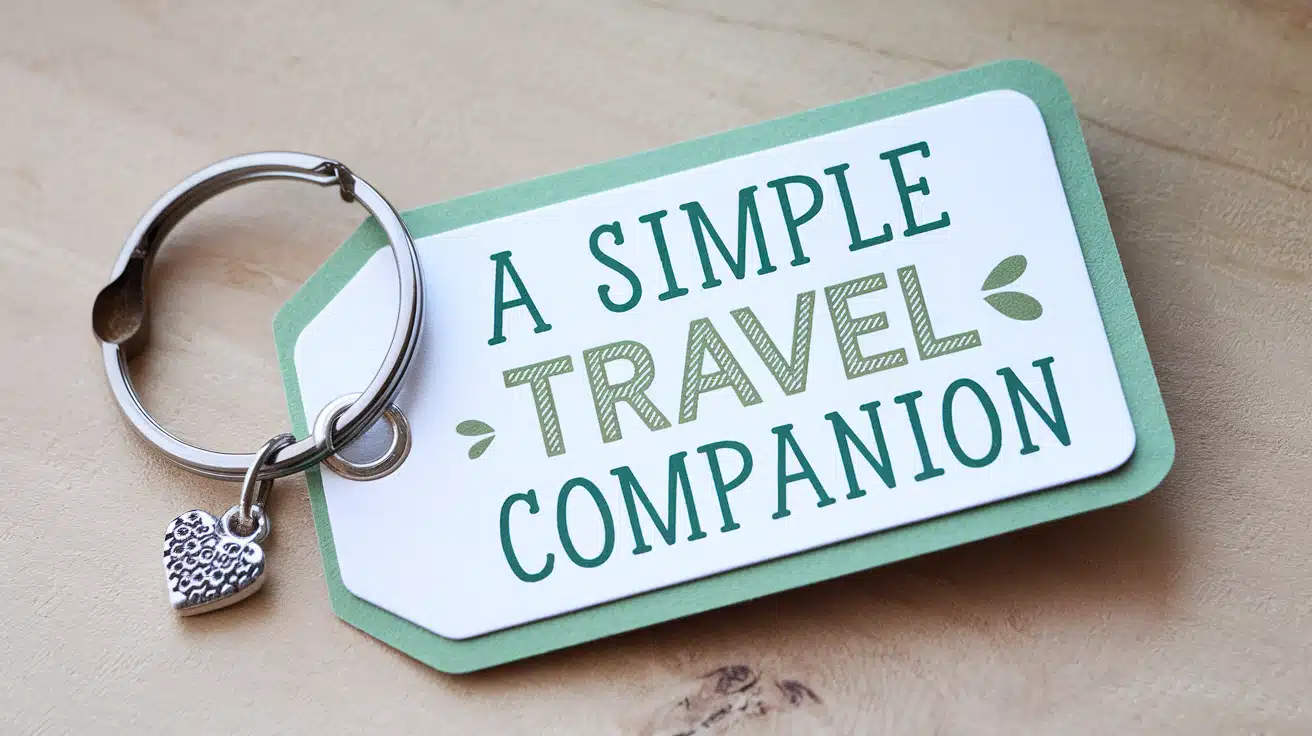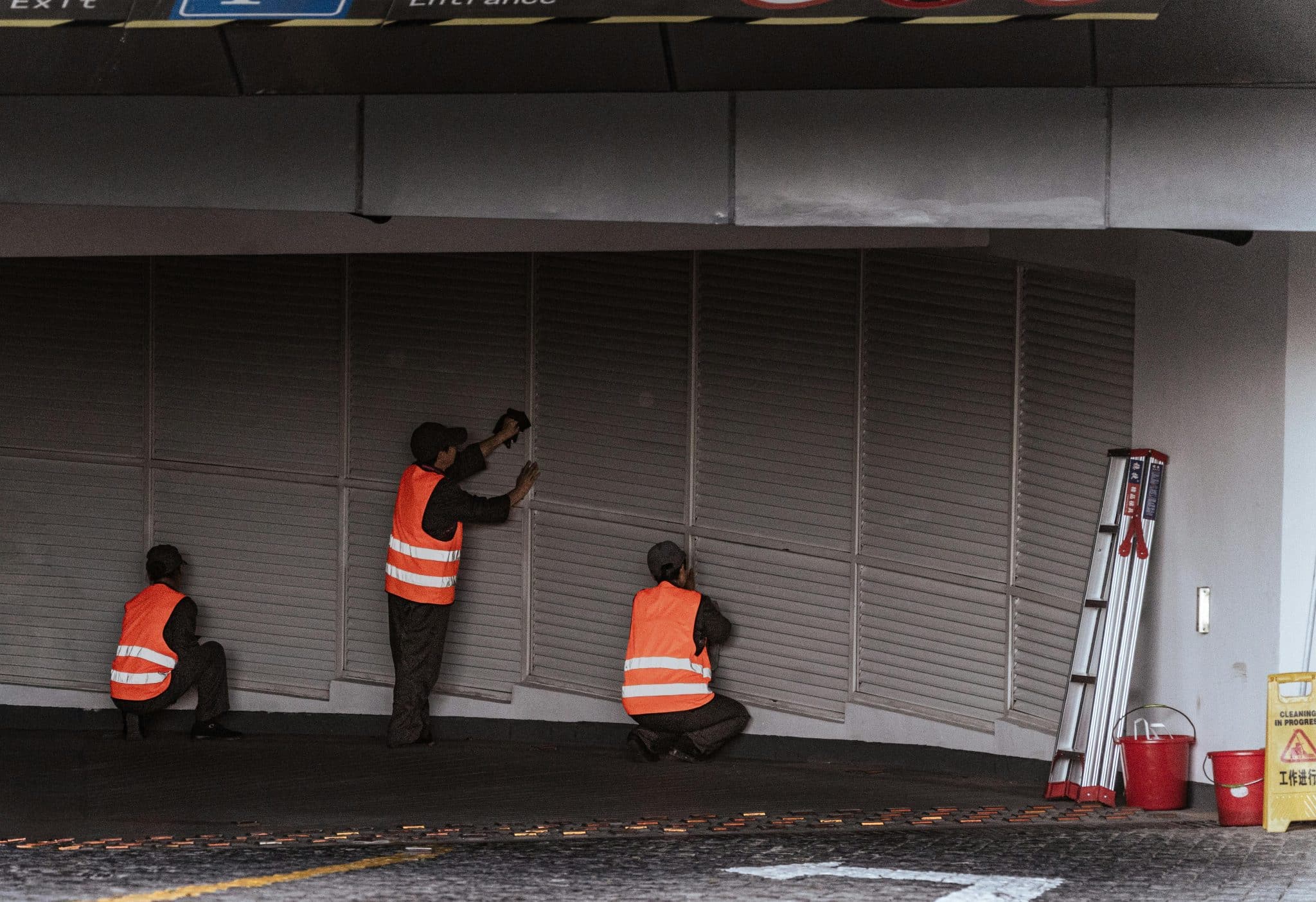Do you feel stressed when trying to spot your bag at the airport? Plain bags can get lost in the crowd. A custom luggage tag helps you find your items fast. This guide shows you how to make a simple, useful tag that stands out.
The process uses basic sewing skills and common materials. You’ll create a durable tag with a clear pocket for your contact details. This project takes about 30 minutes to complete. The finished product will help keep your bags safe during trips and look good, too.
What makes this project special is how practical it is for everyday use. The clear vinyl window protects your information while keeping it visible. The strong strap and snap closure ensure your tag stays put through rough handling.
Follow this step-by-step guide for a quick, fun craft project with real-world benefits.
Why Every Suitcase Deserves a Custom Tag?
Store-bought tags often break or look like everyone else’s. Making your tag gives you control over the style, fabric, and durability. Custom tags also help you spot your luggage quickly on the carousel. They add a personal touch to your travel gear and can match your style.
The vinyl window keeps your contact information safe from water and wear. These tags work well on suitcases, backpacks, gym bags, and more. This small addition can save you time and stress when moving through busy airports or train stations.
Many travelers face the same black suitcases at baggage claim. A bright, unique tag can cut your waiting time in half. If your bag gets lost, a clear contact tag helps staff return it to you faster. Making your own also saves money, as store options can be costly yet poorly made.
The skills you learn making this tag transfer to other small sewing projects. Plus, handmade tags make thoughtful gifts for friends who travel often.
Supplies Checklist for Your Fabric Luggage Tag
| Item | Details/Specifications |
|---|---|
| Main Fabric | 1 piece (4×6 inches), 2 pieces (3×4 inches) |
| Clear Vinyl | 1 piece (3×4 inches) |
| Fusible Interfacing | Medium weight |
| Sewing Machine | Regular foot (Teflon or walking foot recommended) |
| Thread | Matching your fabric |
| Scissors | For cutting fabric and vinyl |
| Pins or Clips | To hold pieces together during sewing |
| Iron and Ironing Board | For applying interfacing |
| Cam Snap Kit | With installation tools |
| Marking Tool | Pencil or fabric-safe marking tool |
Step-by-Step Guide to Making Your Luggage Tag
Follow this easy step-by-step guide to craft a sturdy, stylish luggage tag that’s both practical and personal.
Step 1: Prepare Your Fabric Pieces
Cut three pieces from your main fabric. One larger piece (4×6 inches) for the strap and two smaller pieces (3×4 inches) for the main tag body. Apply medium-weight fusible interfacing to the back of all three fabric pieces.
This adds strength to the finished tag. The interfacing will help your tag keep its shape through countless trips.
Materials needed: Fabric, fusible interfacing, iron, scissors.
Instructions: Place the interfacing on the wrong side of each fabric piece. Press with a hot iron for about 10 seconds to fuse them. Let cool before handling.
Step 2: Prepare the Vinyl Window
Take your vinyl piece (3×4 inches) and fold over the top edge twice, about 1/4 inch each time. This creates a clean edge for the opening where you’ll slip in your contact card. Stitch along this folded edge to secure it. The stitched edge allows easy insertion of your information card.
Materials needed: Vinyl piece, sewing machine, and matching thread.
Instructions: Fold the vinyl edge twice. Stitch close to the inner fold to create a clean finished edge. Use a longer stitch length if your machine struggles with vinyl.
Step 3: Create the Tag Sandwich
Place one of your 3×4 inch fabric pieces right side up. Put the vinyl piece on top with the hemmed edge toward the top. The vinyl should face right side down against the fabric. Place the second fabric piece on top, right side down. You now have a sandwich with fabric right sides together and vinyl in between.
Materials needed: Both fabric pieces, prepared vinyl piece, pins or clips.
Instructions: Stack all three pieces carefully. To avoid holes, use clips instead of pins on the vinyl. Make sure all edges align properly before proceeding to the next step.
Step 4: Stitch the Tag Perimeter
Stitch around the perimeter of the tag, leaving a 2-inch opening at the bottom for turning. Use a 1/4 inch seam allowance. Curve the top corners slightly where the vinyl opening will be. This creates a more finished look. Clip the corners at an angle to reduce bulk when turned.
Materials needed: Sewing machine, thread, scissors.
Instructions: Sew slowly around all sides except for a 2-inch gap. Backstitch at the beginning and end. Clip corners at 45-degree angles without cutting into the stitching.
Step 5: Turn and Finish the Tag Body
Turn the tag’s right side out through the opening you left. Use a blunt tool like a pencil eraser to gently push out the corners. Be careful not to poke through the vinyl. Press the tag flat, avoiding direct iron contact with the vinyl. Topstitch around the entire perimeter to close the opening and give a finished look.
Materials needed: Blunt tool, iron (for fabric portions only), sewing machine.
Instructions: Turn the tag’s right side out. Gently push the corners out. Press the fabric parts only. Topstitch 1/8 inch from the edge all around the tag.
Step 6: Create the Strap
Take your 4×6 inch piece. Fold it in half lengthwise and press. Please open it and fold the long edges in to meet at the center crease. Press again. Fold along the original center line to enclose all raw edges. Stitch along both long sides of the strap close to the edge.
Materials needed: Prepared strap fabric, iron, sewing machine.
Instructions: Create your folds as described. Press each fold firmly. Stitch along both long edges with a 1/8 inch seam allowance.
Step 7: Attach the Strap and Add Hardware
Insert one end of the strap into the opening of your tag. Push it in about 1/2 inch and pin in place. Stitch across to secure it. Add a cam snap to the strap ends. Mark where you want the snap pieces to go. Use the cam snap tool to punch holes and attach both sides of the snap.
Materials needed: Finished strap, tag body, cam snap kit, marking tool.
Instructions: Insert strap and stitch across to secure. Mark snap placement. Follow the cam snap kit instructions to add both halves of the snap closure.
Video Tutorial
I want to give special thanks to Studio 7t7 for providing valuable insights in their video, which I referenced while creating this guide.
Sew Smart: Tricks for a Professional Look
1. Choose the Right Fabrics
Select sturdy cotton fabrics that can withstand wear and tear. Quilting cotton works well but canvas or duck cloth offers even more durability. Pick fabrics that are easy to spot – bright colors or patterns help you locate your bag quickly.
Consider using outdoor or water-resistant fabrics for added protection from the elements.
2. Perfect Your Vinyl Work
Vinyl can be tricky to sew. Lower your machine’s pressure foot tension if possible. Place tissue paper between the vinyl and the machine foot to prevent sticking. Use clips instead of pins to avoid permanent holes in the vinyl.
A walking foot attachment helps feed vinyl smoothly through your machine without bunching or stretching.
3. Secure Your Information Card
Create an information card that fits well in the vinyl pocket. Include your name, phone number, and email address – but avoid putting your home address for security reasons. Print your information rather than write it by hand for better readability.
Make the card slightly smaller than the vinyl pocket for easy insertion and removal.
4. Reinforce Critical Areas
Double stitch where the strap meets the tag body for extra strength. This area receives the most stress during use. Consider adding layer of interfacing just in the strap piece.
If you plan to attach the tag to heavy luggage, use a stronger snap or hardware option like a metal ring instead.
5. Customize for Different Uses
Make different colored tags for each family member for easy identification. Create smaller versions for carry-on items or backpacks. Add a fabric loop on the side to attach keys or other small items.
Consider adding an extra pocket on the back side for storing a backup contact card or small travel documents.
What Not to Do When Crafting Your Luggage Tag
| Common Mistake | Why It’s a Problem | Better Alternative |
|---|---|---|
| Using thin fabrics | Tears easily with regular use | Choose medium to heavy weight fabrics |
| Skipping interfacing | Tag becomes floppy and weak | Always use medium-weight interfacing |
| Using regular pins on vinyl | Creates permanent holes | Use clips or special vinyl pins |
| Placing snaps too close to edges | Can pull through fabric | Place snaps at least 1/2 inch from any edge |
| Using permanent marker on contact card | Can smear or bleed through vinyl | Use printed cards or waterproof pen |
| Making the strap too narrow | May break under weight | Keep strap width at least 1 inch |
| Ironing directly on vinyl | Melts or warps the plastic | Press fabric parts only, avoid vinyl |
Add a Personal Touch: Customization Ideas
Make your luggage tag stand out even more with these personal touches:
- Add fabric scraps in contrasting colors for a patchwork effect
- Stitch your initials or a simple design on the back
- Use fabric from old clothes with meaning to you
- Add a small ribbon or fabric tab to the side for extra flair
- Make seasonal tags for different trips or holidays
- Use fabric paint to add details after construction
Conclusion
Creating your luggage tag combines usefulness with personal style. This small project makes a big difference when traveling. Your handmade tag will help you spot your bag quickly in the crowd.
The clear pocket keeps your details safe while staying visible to anyone who might find your lost bag. The skills used in this project apply to many other sewing tasks. The materials cost very little compared to store-bought tags.
Plus, you can make extras for gifts or make a matching set for all your bags. Next time you travel, you’ll feel good knowing your bags are both protected and unique.
Why not start making one today? Your future traveling self will thank you.
Frequently Asked Questions
1. How Long Does It Take to Make This Luggage Tag?
The entire project takes about 30 minutes from start to finish for a beginner.
2. Can I Make This without a Sewing Machine?
Yes, you can hand-stitch the entire project, but it will take longer and may not be as durable.
3. What Can I Use if I Don’t Have a Cam Snap Kit?
You can use Velcro, buttons, or a small buckle as alternatives for closing the strap.
4. Will the Vinyl Window Protect My Information from Rain?
Yes, the vinyl creates a waterproof barrier that keeps your contact details dry and readable.















